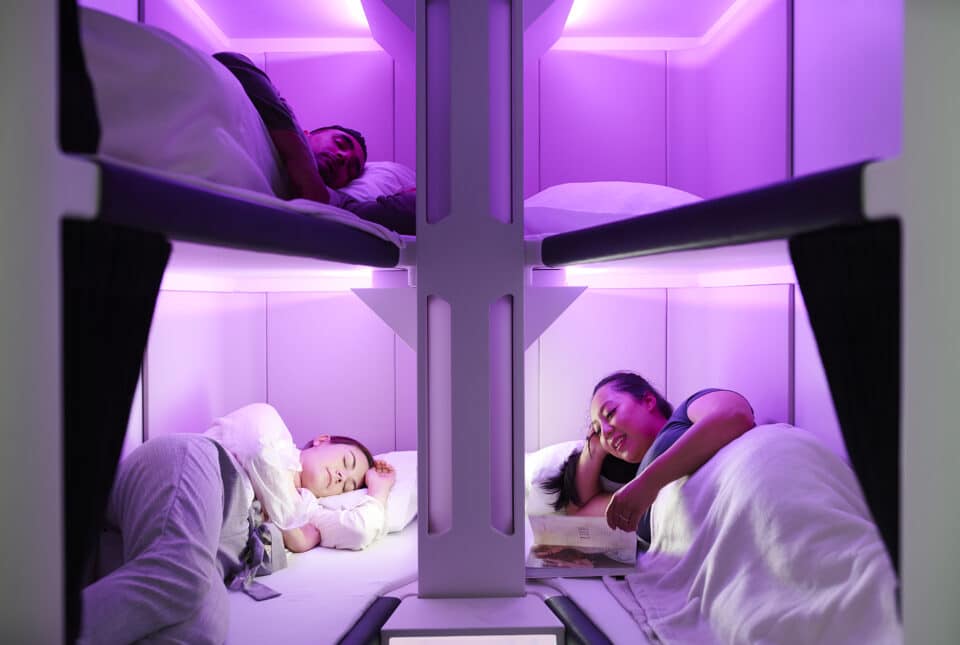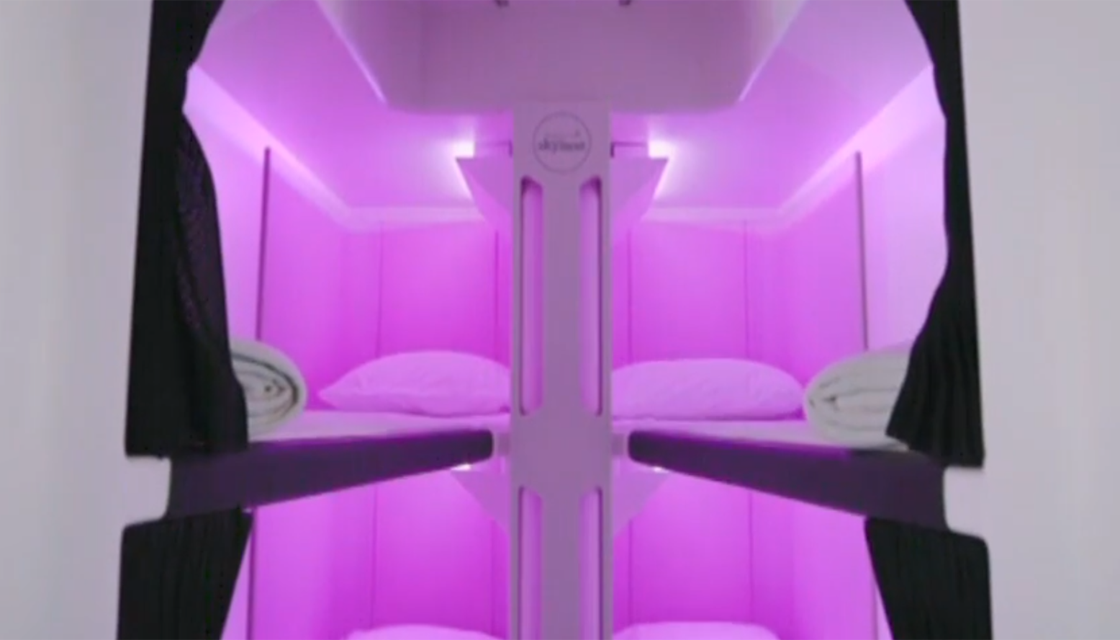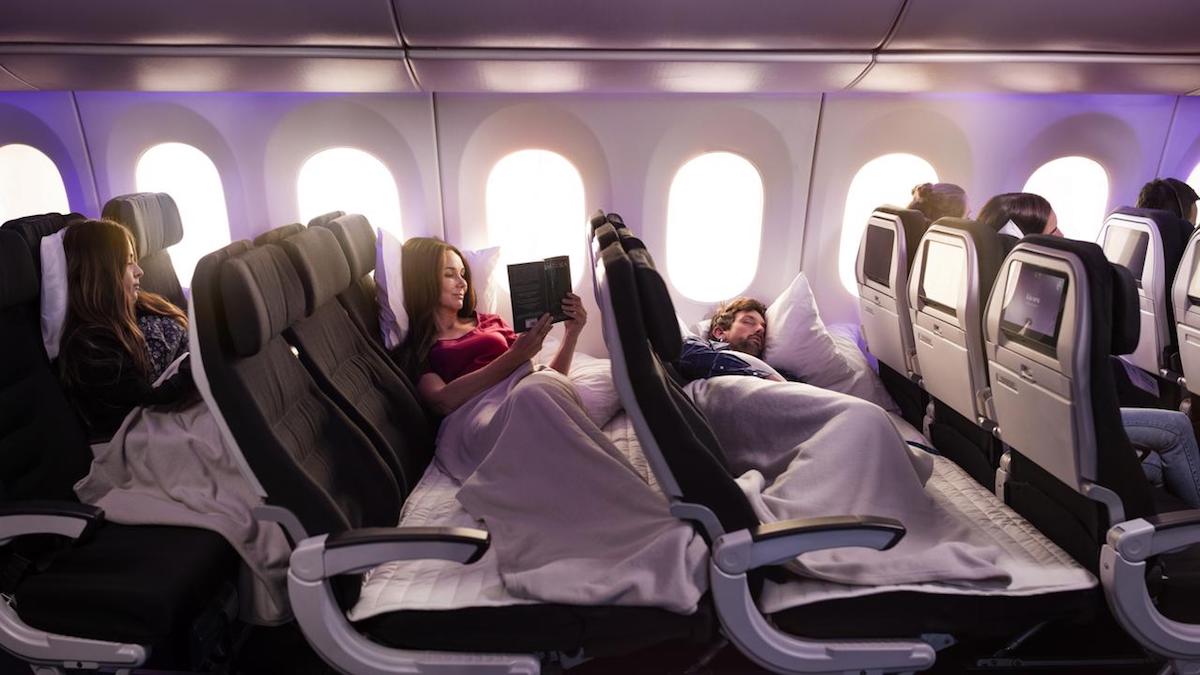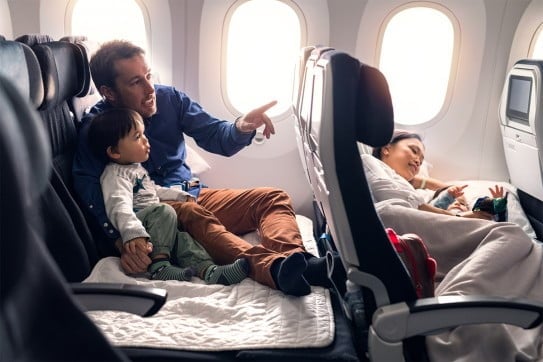Aerospace
Economy Class on Air New Zealand Will Soon Have SkyNest Bunk Beds for Lie-Flat Sleep



The new experience is built around establishing a home away from home that leaves customers rested and ready to go at their destination, according to feedback from extensive customer research conducted over five years that has highlighted the need for more space and comfort as well as the importance of getting a good night’s sleep. The new cabin experience has been driven by innovation from top to bottom. The Skynest idea, initially introduced in 2020, will be a first-of-its-kind experience for Economy passengers.

Every action airline take onboard is intended to help create a sense of calm because research shows that the first night away from home is the hardest to get a good night’s sleep. This includes everything from the lighting and sleep ritual, which includes sleepy teas and balms, to the healthier food options and breathable fabrics. Zentertainment, or meditative on-screen material, will also assist clients in decompressing and preparing for sleep.
Business Premier Luxe
The best sleep in the sky. Our new offering is for customers looking for the ultimate space and privacy. A luxury experience with all the features of Business Premier, but with a fully closing door and space for two to dine.
Business Premier
A comfortable and private nest for a blissful journey and tranquil sleep. And if traveling with a companion, the middle row allows customers to open their nest and share their experience.
Premium Economy
For the treat-seekers looking for a little luxury to unwind and enjoy a taste of Aotearoa. Our new seat offers more privacy and protected space where you can recline at leisure without interrupting the person behind.

Economy Skynest
It’s time to swap the headrest for some bedrest. Say hello to the world’s first sleep pods in the sky, Skynest. Stretch out in one of six pods for part of your journey and catch some shut eye. A game changer for economy travellers.
Economy Skycouch
Use the Skycouch the way you want. Sit, spread out, or lie down and snooze. Share the space or keep it all to yourself.
Economy Stretch
It’s all in the name. This seat is for those who want to rest and stretch their legs further than the regular Economy seat.
Economy seat
An enhanced economy seat designed with more storage, comfort and space and a 50% bigger screen for entertainment. Connect to Bluetooth audio and pair your device to act as a remote control or second screen.
Air New zealand is receiving the eight Boeing 787 Dreamliner aircraft that is arriving in 2024 and retrofitted current 787-9 will have four Business Premier Luxe seats, 22 business premier and 52 premium economy, 213 will be economy seats and specifically for ultra long haul flight airline will add the sky nest facilities.
Please share your opinions regarding the Air New Zealand Skynest seat facility in the comments section.

Aerospace
Boeing Transfers Rocket Stage to NASA, Paving Way for Human Moon Mission

Boeing has achieved a significant milestone by providing NASA with the second core stage of the Space Launch System (SLS) rocket.
This crucial component, crafted at NASA’s Michoud Assembly Facility (MAF), is set to propel the Artemis II crew into lunar orbit, marking humanity’s return to deep space after a 50-year hiatus.
The monumental Boeing-built rocket stage, the largest element of the Artemis II mission, will embark on a journey aboard the Pegasus barge, traveling 900 miles to NASA’s Kennedy Space Center.
Comparison of two legendary aircraft B777x vs B747 aircraft:Click here
Upon arrival, it will be meticulously integrated with other essential Artemis II components, including the upper stage, solid rocket boosters, and NASA’s Orion spacecraft within the iconic Vehicle Assembly Building. This intricate integration process is a vital step toward the eagerly anticipated Artemis II launch, slated for 2025.
“Boeing-built products helped land humankind on the moon in 1969, and we’re proud to continue that legacy through the Artemis generation,” remarked Dave Dutcher, vice president and program manager for Boeing’s SLS program. “Together, with NASA and our industry partners and suppliers, we are building the world’s most capable rocket and paving the way to deep space through America’s rocket factory in New Orleans.”
NASA, Lockheed Martin Reveal X-59 Quiet Supersonic Aircraft:Click here
The delivery of Core Stage 2 marks a significant achievement in the evolution of the SLS rocket. Towering over 200 feet and powered by four RS-25 engines, this core stage, coupled with two solid-fueled booster rockets, will generate a staggering 8.8 million pounds of thrust. This immense power is crucial to launching Artemis II and future missions into the vast expanse of space.
The SLS rocket stands unparalleled in its capability to transport both crew and substantial cargo to the moon and beyond in a single launch. Its extraordinary capacity will facilitate the delivery of human-rated spacecraft, habitats, and scientific missions to destinations including the moon and Mars, ushering in a new era of space exploration.
-

 Travel1 week ago
Travel1 week agoAir India to Expand US Operations with Three New Routes After a Decade
-

 Travel2 weeks ago
Travel2 weeks agoWhy We Should Avoid These Stamps in a Passport
-

 Airlines1 month ago
Airlines1 month agoInvestigations Reveal Fake Chinese Titanium in Boeing and Airbus Jets
-

 Tech4 weeks ago
Tech4 weeks agoChina’s CATL Plans 1,800-Mile Electric Plane Launch by 2027
-

 Airport3 days ago
Airport3 days agoTop 10 Largest Airports in the World by Size
-

 Aerospace4 weeks ago
Aerospace4 weeks agoChina’s Fighter Jets Turn Wings into Autonomous Drones
-

 Airlines4 days ago
Airlines4 days agoAir India Rolls Out A350s for Delhi-New York JFK and Newark Routes
-

 Defence3 weeks ago
Defence3 weeks agoBoeing Enhances Chinook with New Engines and Block II Upgrades at $96 Million







